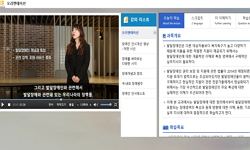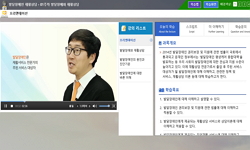Background: We aimed to evaluate the long-term growth and neurodevelopmental outcomes of very-low-birth-weight infants (VLBWIs, birth weight < 1,500 g) born between 2013, the establishment of the Korean Neonatal Network (KNN), and 2018, both at 18...
http://chineseinput.net/에서 pinyin(병음)방식으로 중국어를 변환할 수 있습니다.
변환된 중국어를 복사하여 사용하시면 됩니다.
- 中文 을 입력하시려면 zhongwen을 입력하시고 space를누르시면됩니다.
- 北京 을 입력하시려면 beijing을 입력하시고 space를 누르시면 됩니다.




Serial Long-Term Growth and Neurodevelopment of Very-Low-Birth-Weight Infants: 2022 Update on the Korean Neonatal Network
한글로보기https://www.riss.kr/link?id=A108243119
-
저자
Jeon Ga Won (Department of Pediatrics, Inha University Hospital, Inha University College of Medicine, Incheon, Korea.) ; Lee Jang Hoon (Department of Pediatrics, Ajou University School of Medicin, Suwon, Korea.) ; Oh Minkyung (Department of Pharmacology, Inje University College of Medicine, Busan, Korea.) ; Chang Yun Sil (Department of Pediatrics, Samsung Medical Center, Sungkyunkwan University School of Medicine, Seoul, Korea.Department of Health Sciences and Technology, Samsung Advanced Institute for Health Sciences)
- 발행기관
- 학술지명
- 권호사항
-
발행연도
2022
-
작성언어
English
- 주제어
-
등재정보
KCI등재,SCI,SCIE,SCOPUS
-
자료형태
학술저널
-
수록면
1-11(11쪽)
-
KCI 피인용횟수
0
- DOI식별코드
- 제공처
-
0
상세조회 -
0
다운로드
부가정보
다국어 초록 (Multilingual Abstract)
Background: We aimed to evaluate the long-term growth and neurodevelopmental outcomes of very-low-birth-weight infants (VLBWIs, birth weight < 1,500 g) born between 2013, the establishment of the Korean Neonatal Network (KNN), and 2018, both at 18–24 months of corrected age and three years of age, using a nationwide large cohort, and to evaluate whether these outcomes have improved over time since 2013.
Methods: This study used data from the annual reports of the KNN for 18–24 months of corrected age (follow-up 1) and three years of age (follow-up 2). Follow-up 1 data were collected from 10,065 eligible VLBWIs born between January 1, 2013, and December 31, 2018.
Follow-up 2 data were collected from 8,156 eligible VLBWIs born between January 1, 2013, and December 31, 2017.
Results: The overall follow-up rates of VLBWIs at follow-ups 1 and 2 were 74.6% (7,512/10,065) and 57.7% (4,702/8,156), respectively. The overall mortality rate between discharge from the neonatal intensive care unit and follow-up 1 was 1% (104/10,065). The overall mortality rate between follow-ups 1 and 2 was 0.049% (4/8,156). Growth restrictions decreased over time, especially weight growth restrictions, which significantly decreased according to era (17% in infants born in 2013–2014 and 13% in infants born in 2017–2018). Fewer infants were rehospitalized and required rehabilitative support according to era at follow-up 1. More infants had language developmental delays and required language support according to era, both at follow-ups 1 and 2. The incidence of cerebral palsy has significantly decreased over time, from 6% in infants born in 2013–2014 to 4% in infants born in 2017–2018 at follow-up 1, and from 8% in infants born in 2013–2014 to 5% in infants born in 2017 at follow-up 2.
Conclusion: Long-term outcomes of VLBWIs regarding weight growth and cerebral palsy, the most common motor disability in childhood, have improved serially according to era since 2013. However, the rate of infants with language delays requiring language support has increased according to era. Further studies are required on the increased trends of language delay and language support while improving motor outcomes.
참고문헌 (Reference)
1 Horbar JD, "Weight growth velocity and postnatal growth failure in infants 501 to 1500 grams : 2000–2013" 136 (136): e84-e92, 2015
2 WHO Multicentre Growth Reference Study Group, "WHO Child Growth Standards based on length/height, weight and age" 450 : 76-85, 2006
3 Chae Young Kim ; Euiseok Jung ; Byong Sop Lee ; Ki-Soo Kim ; Ellen Ai-Rhan Kim, "Validity of the Korean Developmental Screening Test for very-low-birth-weight infants" 대한소아청소년과학회 62 (62): 187-192, 2019
4 Touyama M, "Trends in the prevalence of cerebral palsy in children born between 1988 and 2007 in Okinawa, Japan" 38 (38): 792-799, 2016
5 Prakalapakorn SG, "Trends in retinopathy of prematurity screening and treatment : 2008–2018" 147 (147): e2020039966-, 2021
6 Arnaud C, "Trends in prevalence and severity of pre/perinatal cerebral palsy among children born preterm from 2004 to 2010 : a SCPE collaboration study" 12 : 624884-, 2021
7 Stolt S, "The prevalence and predictive value of weak language skills in children with very low birth weight--a longitudinal study" 103 (103): 651-658, 2014
8 Kim NH, "The predictors for the non-compliance to follow-up among very low birth weight infants in the Korean neonatal network" 13 (13): e0204421-, 2018
9 "The Evidence from NRNJ database for VLBW (2003-2012)-Vol 1-(2021 revision)"
10 전가원, "Surfactant preparations for preterm infants with respiratory distress syndrome: past, present, and future" 대한소아청소년과학회 62 (62): 155-161, 2019
1 Horbar JD, "Weight growth velocity and postnatal growth failure in infants 501 to 1500 grams : 2000–2013" 136 (136): e84-e92, 2015
2 WHO Multicentre Growth Reference Study Group, "WHO Child Growth Standards based on length/height, weight and age" 450 : 76-85, 2006
3 Chae Young Kim ; Euiseok Jung ; Byong Sop Lee ; Ki-Soo Kim ; Ellen Ai-Rhan Kim, "Validity of the Korean Developmental Screening Test for very-low-birth-weight infants" 대한소아청소년과학회 62 (62): 187-192, 2019
4 Touyama M, "Trends in the prevalence of cerebral palsy in children born between 1988 and 2007 in Okinawa, Japan" 38 (38): 792-799, 2016
5 Prakalapakorn SG, "Trends in retinopathy of prematurity screening and treatment : 2008–2018" 147 (147): e2020039966-, 2021
6 Arnaud C, "Trends in prevalence and severity of pre/perinatal cerebral palsy among children born preterm from 2004 to 2010 : a SCPE collaboration study" 12 : 624884-, 2021
7 Stolt S, "The prevalence and predictive value of weak language skills in children with very low birth weight--a longitudinal study" 103 (103): 651-658, 2014
8 Kim NH, "The predictors for the non-compliance to follow-up among very low birth weight infants in the Korean neonatal network" 13 (13): e0204421-, 2018
9 "The Evidence from NRNJ database for VLBW (2003-2012)-Vol 1-(2021 revision)"
10 전가원, "Surfactant preparations for preterm infants with respiratory distress syndrome: past, present, and future" 대한소아청소년과학회 62 (62): 155-161, 2019
11 Chow SS, "Report of the Australian and New Zealand Neonatal Network 2019" Australian and New Zealand Neonatal Network 2021
12 Oskoui M, "Prevalence of cerebral palsy in Quebec : alternative approaches" 40 (40): 264-268, 2013
13 Kono Yumi, "Neurodevelopmental outcomes of very low birth weight infants in the Neonatal Research Network of Japan: importance of neonatal intensive care unit graduate follow-up" 대한소아청소년과학회 64 (64): 313-321, 2021
14 Pierrat V, "Neurodevelopmental outcomes at age 5 among children born preterm : EPIPAGE-2 cohort study" 373 (373): n741-, 2021
15 Pascal A, "Neurodevelopmental outcome in very preterm and very-low-birthweight infants born over the past decade : a meta-analytic review" 60 (60): 342-355, 2018
16 Vandormael C, "Language in preterm born children : atypical development and effects of early interventions on neuroplasticity" 2019 : 6873270-, 2019
17 Cristobal R, "Hearing loss in children with very low birth weight : current review of epidemiology and pathophysiology" 93 (93): F462-F468, 2008
18 Figueras-Aloy J, "Extrauterine growth restriction in very preterm infant : etiology, diagnosis, and 2-year follow-up" 179 (179): 1469-1479, 2020
19 Spittle AJ, "Early diagnosis and treatment of cerebral palsy in children with a history of preterm birth" 45 (45): 409-420, 2018
20 Sellier E, "Decreasing prevalence in cerebral palsy : a multi-site European population-based study, 1980 to 2003" 58 (58): 85-92, 2016
21 Hafström M, "Cerebral palsy in extremely preterm infants" 141 (141): e20171433-, 2018
22 Monset-Couchard M, "Catch-up growth in 166 small-for-gestational age premature infants weighing less than 1, 000 g at birth" 78 (78): 161-167, 2000
23 Fortmann I, "A timely administration of antenatal steroids is highly protective against intraventricular hemorrhage : an observational multicenter cohort study of very low birth weight infants" 10 : 721355-, 2022
24 The Executive Committee of Korean Neonatal Network, "2020 Korean Neonatal Network Annual Report" Korea National Institute of Health 2021
25 The Executive Committee of Korean Neonatal Network, "2019 Korean Neonatal Network Annual Report" Korea Centers for Disease Control and Prevention 2020
26 The Executive Committee of Korean Neonatal Network, "2018 Korean Neonatal Network Annual Report" Korea Centers for Disease Control and Prevention 2019
27 The Executive Committee of Korean Neonatal Network, "2017 Korean Neonatal Network Annual Report" Korea Centers for Disease Control and Prevention 2018
28 The Executive Committee of Korean Neonatal Network, "2016 Korean Neonatal Network Annual Report" Korea Centers for Disease Control and Prevention 2017
29 The Executive Committee of Korean Neonatal Network, "2015 Korean Neonatal Network Annual Report" Korea Centers for Disease Control and Prevention 2016
동일학술지(권/호) 다른 논문
-
- 대한의학회
- Woo Hyeonseong
- 2022
- KCI등재,SCI,SCIE,SCOPUS
-
- 대한의학회
- Shin Dong Hoon
- 2022
- KCI등재,SCI,SCIE,SCOPUS
-
A Case Report for Acute Myopericarditis After NVX-CoV2373 (Novavax ® ) COVID-19 Vaccination
- 대한의학회
- Kim Hyung Yoon
- 2022
- KCI등재,SCI,SCIE,SCOPUS
-
- 대한의학회
- Kim Jong-Hun
- 2022
- KCI등재,SCI,SCIE,SCOPUS
분석정보
인용정보 인용지수 설명보기
학술지 이력
| 연월일 | 이력구분 | 이력상세 | 등재구분 |
|---|---|---|---|
| 2023 | 평가예정 | 해외DB학술지평가 신청대상 (해외등재 학술지 평가) | |
| 2020-01-01 | 평가 | 등재학술지 유지 (해외등재 학술지 평가) |  |
| 2011-01-01 | 평가 | 등재학술지 유지 (등재유지) |  |
| 2009-01-01 | 평가 | 등재학술지 유지 (등재유지) |  |
| 2005-01-01 | 평가 | SCI 등재 (등재유지) |  |
| 2002-01-01 | 평가 | 등재학술지 선정 (등재후보2차) |  |
| 1999-07-01 | 평가 | 등재후보학술지 선정 (신규평가) |  |
학술지 인용정보
| 기준연도 | WOS-KCI 통합IF(2년) | KCIF(2년) | KCIF(3년) |
|---|---|---|---|
| 2016 | 1.48 | 0.37 | 1.06 |
| KCIF(4년) | KCIF(5년) | 중심성지수(3년) | 즉시성지수 |
| 0.85 | 0.75 | 0.691 | 0.11 |




 KCI
KCI






